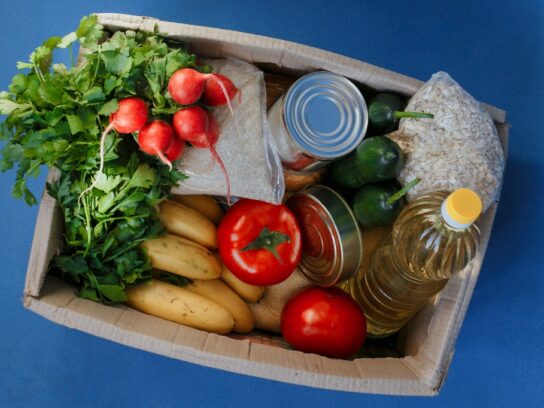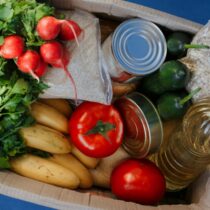
As the Capital Area Food Bank (CAFB) annual report on food insecurity revealed last week, the problem is getting worse in the metro region and in Montgomery County. This is happening despite reports of economic progress such as lower inflation, job growth, and higher wages.
The report found food insecurity in the County jumped from 27% to 34% between May 2023 and May 2024.
The numbers seem to fly in the face of rosier economic reports over the past year. However, the authors of the report point out despite the better economic numbers, the picture on the ground is painting a far different reality.
The level of food insecurity in the County is now at its highest level in the three years since the Capital Area Food Bank began collecting data with the social research organization NORC at the University of Chicago.
Reasons Driving Food Insecurity and People Impacted
Researchers found several reasons driving food insecurity. They include inflation, housing costs, employment challenges, flat wages, and cuts in federal spending after the pandemic.
Residents who are feeling the most impact include people of color, people with children, and people with lower incomes and education levels.
The study found middle class households, especially people earning between $100,000 and $150,000 a year have seen the greatest rate of increase in food insecurity.
County Initiatives
The County’s current budget has allocated about $14 million dollars for various food assistance programs and grants. Yet, the food insecurity problem is still rising.
“Clearly there is a resource issue and we do need to purchase more supplies of food to be able to distribute to families,” said Councilmember Gabe Albornoz (D-At Large).
“But beyond that, we also need to be more strategic in how we connect the various organizations and County government who are on the front lines addressing this issue. The same groups also are trying to address the underlying issues that are leading to food insecurity in the first place,” Albornoz added.
Office of Food Systems Resilience
Heather Bruskin is the County Director of the Office of Food Systems Resilience (OFSR).
She said the new report “illustrates how working families are particularly struggling to afford basic needs, as these households often earn too much to qualify for assistance programs, but not enough to fully cover their monthly costs for food, housing, child care, transportation, and medical care.”
Catherine Nardi is the program manager for OFSR. She told MCM the Capital Area Food Bank report aligns with the current data her office has on food insecurity in the County.
Investments in Food Programs
Nardi said the County is investing in food programs to help those in need. The Department of Health and Human Services provides $3 million for the County’s Service Consolidation Hubs. The County established the Hubs during the pandemic. They are a partnership between DHHS and community-based organizations. The Hubs provide food and other resources to residents in need. Some of the services offered include free food, diapers, and other baby needs.
Besides the Hubs, the Office of Food Systems Resilience provides an additional $11 million for various food security programs.
“That includes a school-based food assistance grant program which supports more than 60 Montgomery County Public Schools (MCPS) school sites. The money also goes towards SNAP’s (Supplemental Nutrition Assistance Program) outreach grant program. It also goes towards the Food as Medicine grant program, and the newly created MC Groceries program,” Nardi said.
The County announced the MC Groceries program last month. It is a new initiative designed to increase food security and combat childhood hunger. The program hopes to provide nearly 600 families dealing with food insecurity monthly stipends for online grocery shopping and delivery. The County is partnering with Instacart in this effort.
The County also works with the Manna Food Center to provide grants to farms and food assistance partners.
Looking Towards the Future
Despite the amount of County funding, the Capital Area Food Bank report said more private and government investment is needed to combat food insecurity.
“The economic gains that so many of us have read about simply aren’t being felt equally. Reversing this growth in food insecurity and inequity so that more of our neighbors can thrive must be a priority for all of us – everyone has a role to play in addressing this large but ultimately very solvable problem,” said Radha Muthiah, President and CEO of the Capital Area Food Bank.
The report recommends maintaining and strengthening federal programs that support food security and adopting state-level policies that expand food access.
The CAFB also wants the region to support programs and policies that take a holistic approach to addressing economic hardship. Food costs are just one part of the problem, housing is another, as well as access to better employment opportunities.
Albornoz agrees. He said at the end of the day the biggest issue is income. Some people do not have enough income to pay for the various costs to live in the County such as housing.
However, he remains hopeful the County can tackle the problem of food insecurity in the community.
“I think we are in a better position than we were four years ago. We have a blueprint, a strategic plan to end childhood hunger here in our community. It’s predicated on expanding some of these strategic efforts now in place. The hope is the plans will reach more people, and help us take better advantage of the precious resources we do have,” Albornoz said.
Private Donations
The Capital Area Food Bank does accept private donations. People who would like to donate can check out this link:
https://give.capitalareafoodbank.org/give/500308/#!/donation/checkout

Comments are closed.